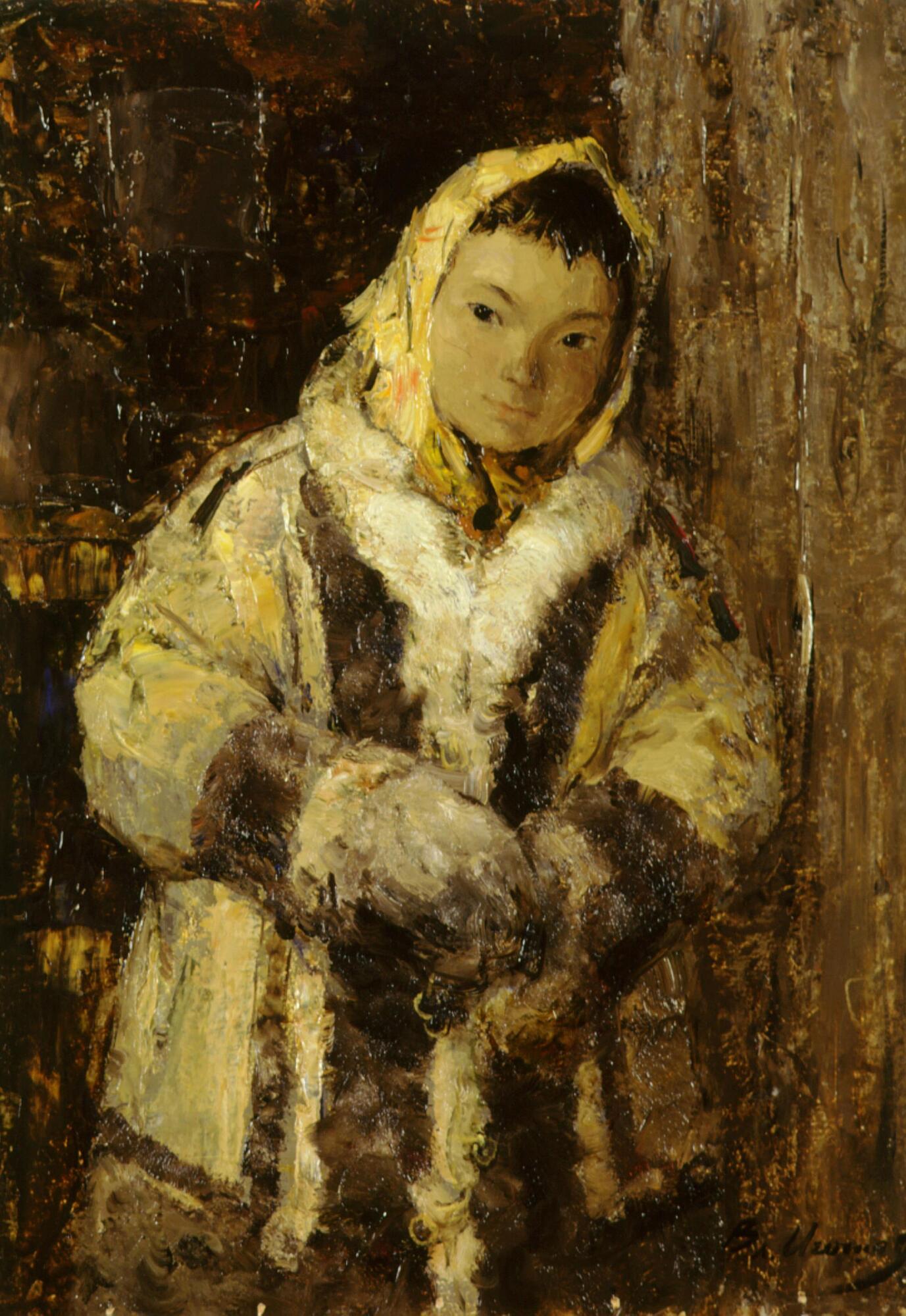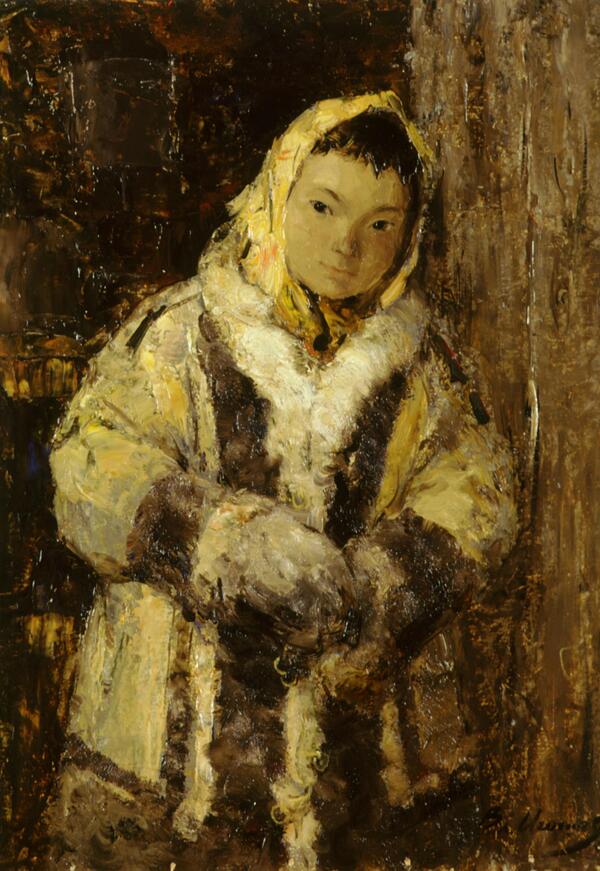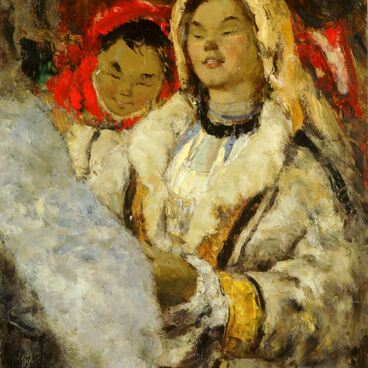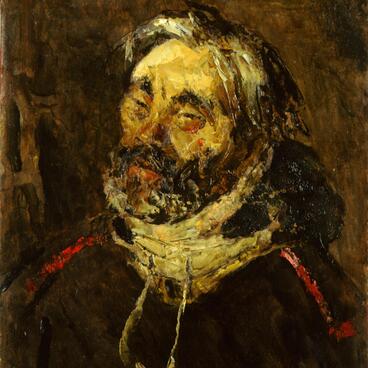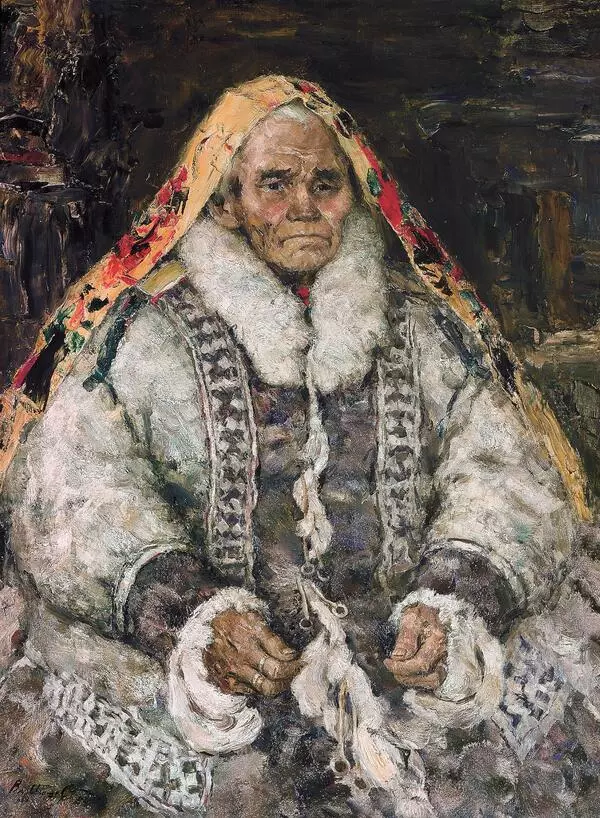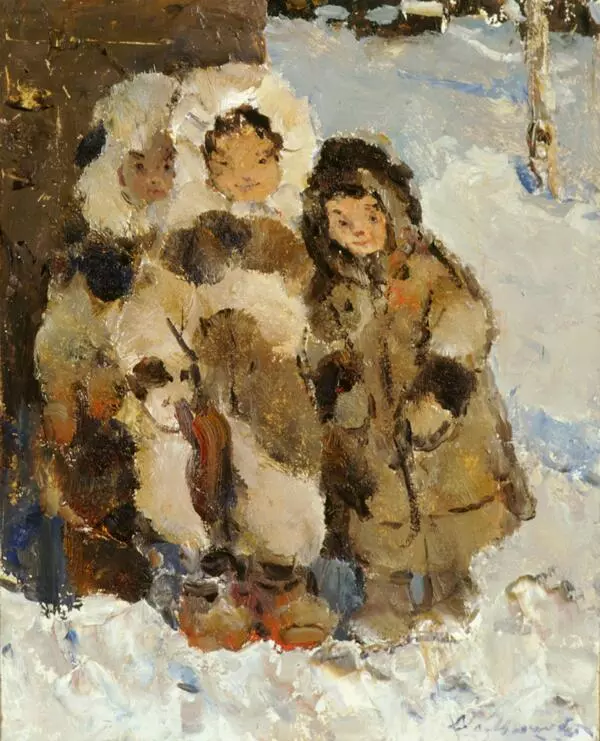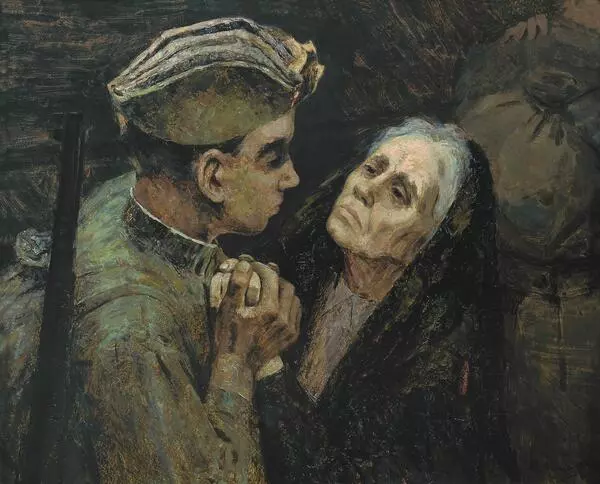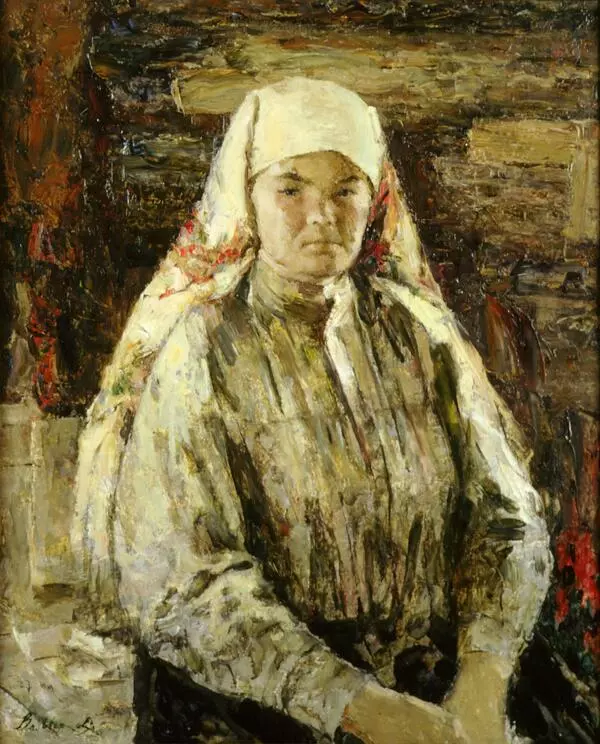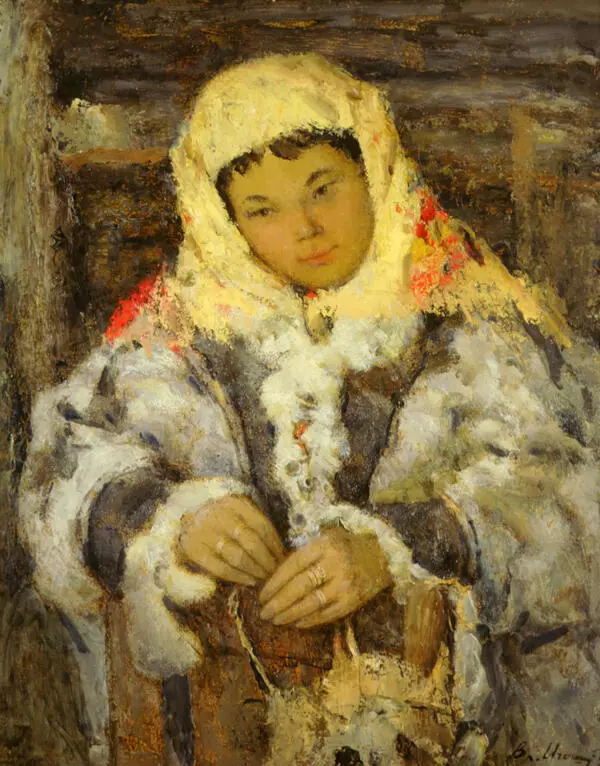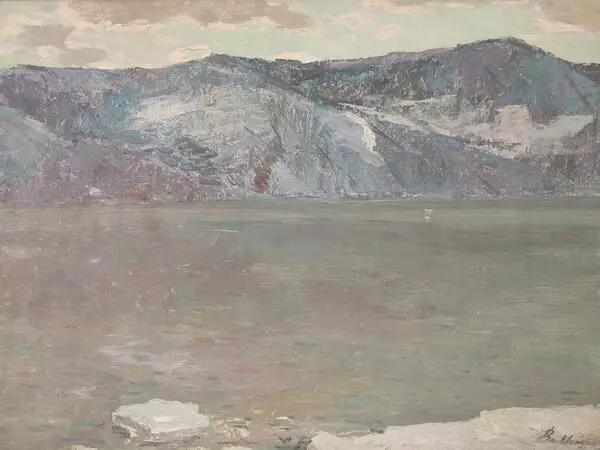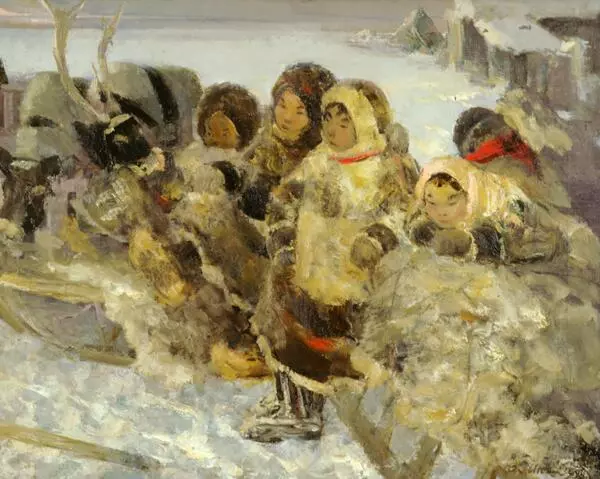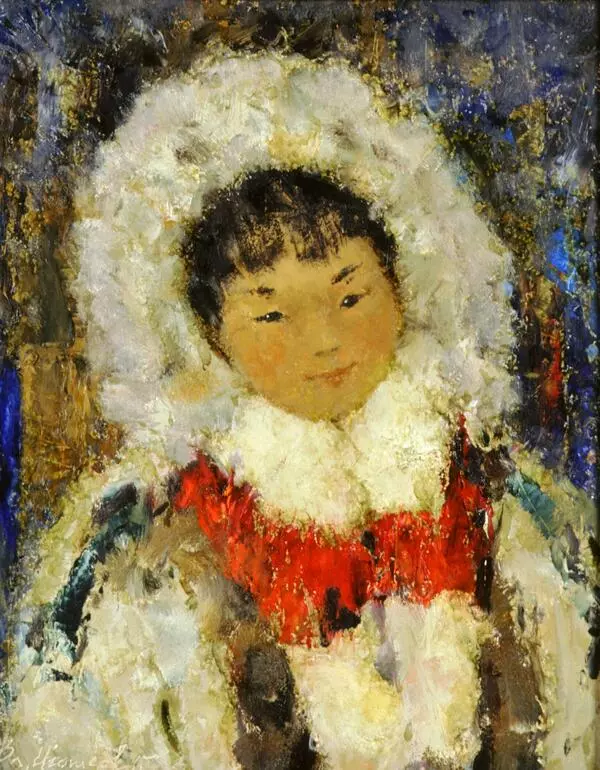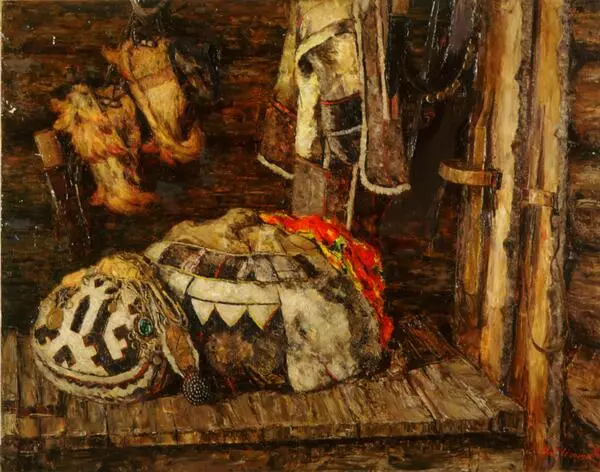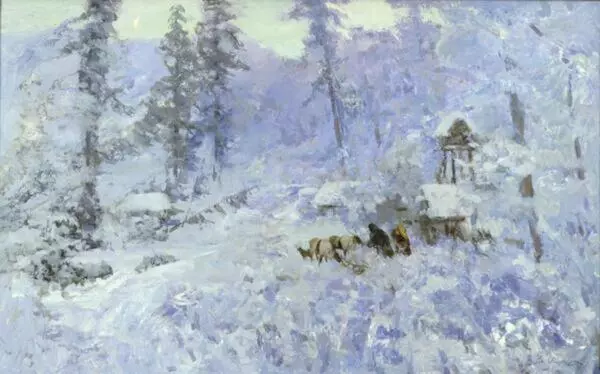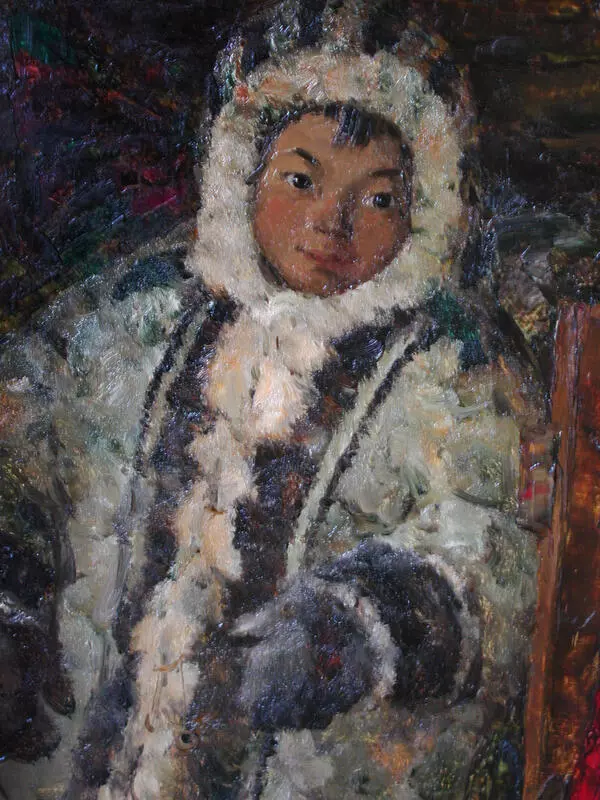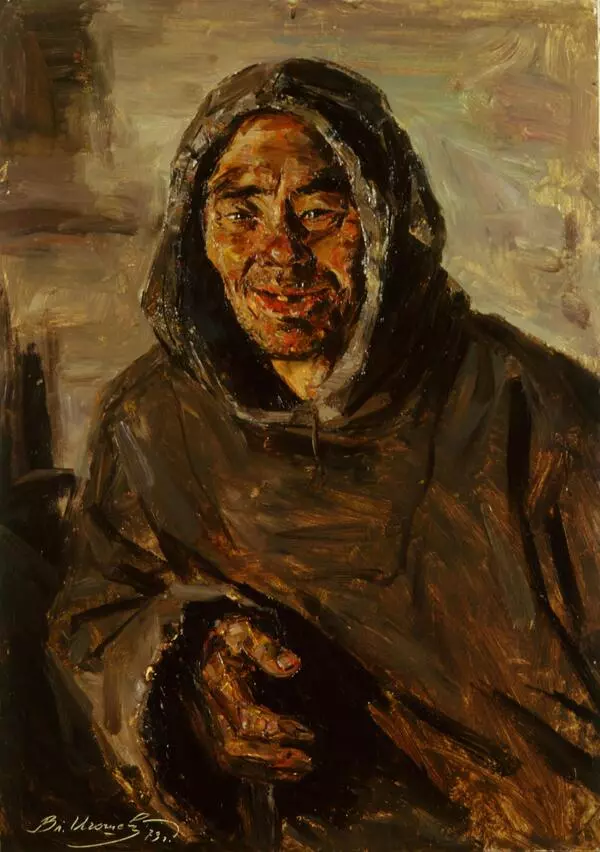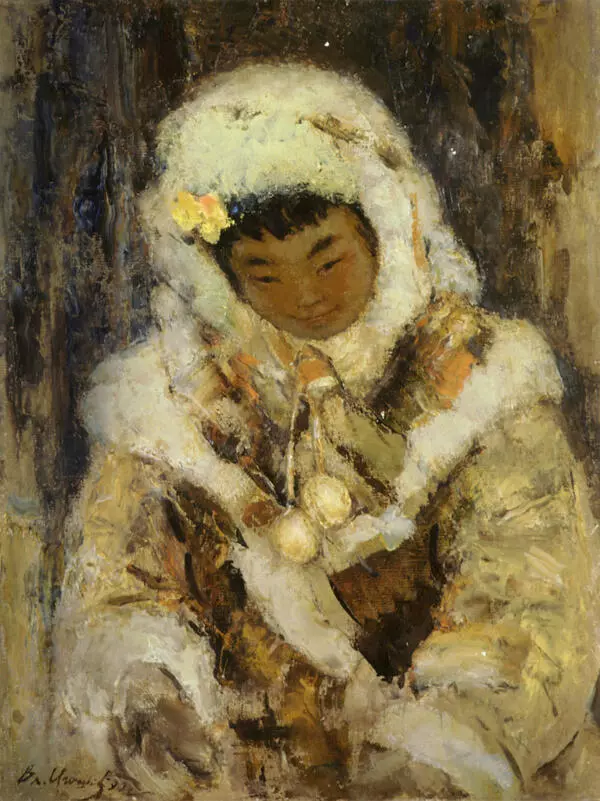Portrait Pelikova Liza was painted by Vladimir Igoshev in 1976. He first visited the North in 1954. Later on he often went on expeditions with geologists to the far corners of the Northern Urals. In order to depict the beauty of the region in his paintings, the artist had to use helicopters, small planes and sleighs pulled by reindeer for transportation. The painter brought a lot of sketches from these expeditions, and some of the paintings were created en plein air.
In the North Urals parents taught their children different activities from an early age. In such a way they could easily get used to the harsh environmental conditions. The children and adults used to spend their days in taiga working about the house or in the yard. Children were occupied with activities they were capable of, and during their leisure time they played. Since early years the girls knew needlework and could make clothes for their dolls, repeating after their mothers. In the portrait of Liza Pelikova the author showed a generalized image of the Northern child.
In the painting the yellow parts of kerchief and a fur collar highlight the girl’s face. She wears the large mittens on her small hands and a sak (outdoor clothes of the Ob Ugrians). The sak was usually made of reindeer hides, fur of hare and squirrel, bird skins and fabric. Its main details are the orthogonal back and flaps, narrowing sleeves and a collar.
The family name Pelikov was widespread in the North Urals. It is derived from the Mansi word, which means heated by the fire, in other words, it defines a quick-tempered person. The first written sources mentioning this name go back to the 19th century. At first Pelikovs came from the Pelym Mansi. This territorial group was situated in the area of the Pelym river. Far back in the past the Pelym Mansi were surrounded by the Ob-Ugric population. In the late 20th century there were almost no people left identifying themselves as the Palym Mansi. They preserved their native language and traditions up until recently. They did fishing, hunting and bred horses. The Russian population had a great impact on their everyday life. In the late 20th century, apart from Pelikovs, the Khandybin, Kurikov, and Sambindalov families lived in the area of the Pelym river.
In the North Urals parents taught their children different activities from an early age. In such a way they could easily get used to the harsh environmental conditions. The children and adults used to spend their days in taiga working about the house or in the yard. Children were occupied with activities they were capable of, and during their leisure time they played. Since early years the girls knew needlework and could make clothes for their dolls, repeating after their mothers. In the portrait of Liza Pelikova the author showed a generalized image of the Northern child.
In the painting the yellow parts of kerchief and a fur collar highlight the girl’s face. She wears the large mittens on her small hands and a sak (outdoor clothes of the Ob Ugrians). The sak was usually made of reindeer hides, fur of hare and squirrel, bird skins and fabric. Its main details are the orthogonal back and flaps, narrowing sleeves and a collar.
The family name Pelikov was widespread in the North Urals. It is derived from the Mansi word, which means heated by the fire, in other words, it defines a quick-tempered person. The first written sources mentioning this name go back to the 19th century. At first Pelikovs came from the Pelym Mansi. This territorial group was situated in the area of the Pelym river. Far back in the past the Pelym Mansi were surrounded by the Ob-Ugric population. In the late 20th century there were almost no people left identifying themselves as the Palym Mansi. They preserved their native language and traditions up until recently. They did fishing, hunting and bred horses. The Russian population had a great impact on their everyday life. In the late 20th century, apart from Pelikovs, the Khandybin, Kurikov, and Sambindalov families lived in the area of the Pelym river.
